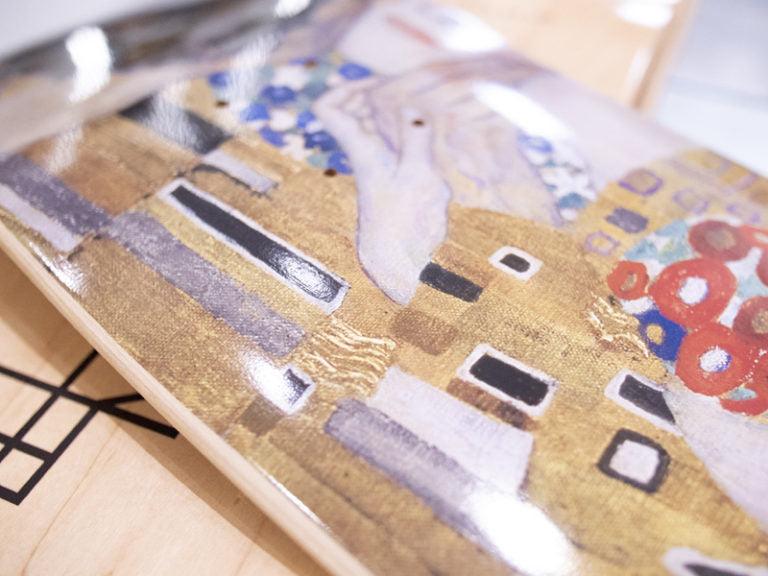gustav Klimt
Gustav Klimt Skateboard Triptych – The Kiss (1907-1908)
Gustav Klimt Skateboard Triptych – The Kiss (1907-1908)
Couldn't load pickup availability
exclusive limited edition of 100 Gustav Klimt Skateboard Triptych featuring the Vienna Secessionist's best known work The Kiss (1907-1908). The Kiss depicts a couple locked in an embrace, located in an indeterminate and ambiguous place and time. The viewer is only able to see of the embracing couple, segments of their bodies and virtually nothing of the man's face so as to emphasize the engulfing nature of this intimate and passionate moment. Aside from the figures, the rest of the canvas dissolves into shimmering, extravagant yet flat patterning. Klimt's ties with the art nouveau movement are reflected in the patterning of the figures, which in itself reflects the visual conflict between two and three-dimensionality associated with other modernist artists like Edgar Degas . In The Kiss, the patterning also signifies gender contrasts – rectangles for the man's garment, circles for the woman's. Yet the patterning also unites the two lovers into a single formal entity underscoring their erotic union. Scholars believe the kiss represents Klimt and his long-time friend Emilie Flöge, a member of the Viennese bohemian and fin-de-siècle circles. In the words of the poet Friedrich Schiller's famous Ode to Joy : “Joy, thou gleaming spark divine…







